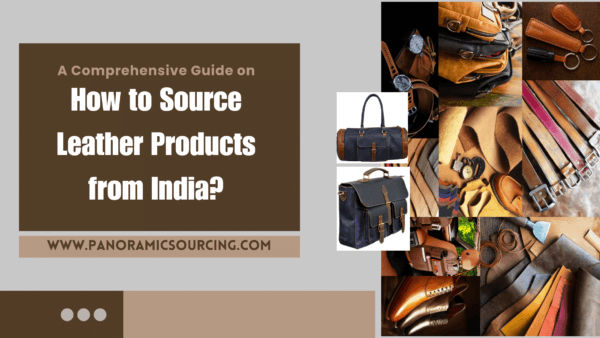Introduction
India stands as a prominent player in the global leather industry, with a rich heritage legacy of handmade leather craftsmanship across its production centers.. For those interested in authentic craftsmanship, discovering the art of handmade leather in India offers insight into traditional techniques and timeless design.In this guide, we will delve into the steps involved in sourcing leather products from India, covering industry scenarios, required documentation, and tips for buyers.
Industry Scenario
More than 95% of the production units in the leather sector in India are Micro, Small & Medium Enterprises (MSMEs). The key production centers are scattered across states such as Tamil Nadu, Andhra Pradesh, West Bengal, Uttar Pradesh, Maharashtra, Punjab, Haryana, and Delhi.
Steps to Sourcing Leather Products from India
- Identify Your Requirements
- Define the type and quantity of leather products you are looking for.
- Specify the quality standards and design specifications.
- Research Potential Suppliers
- Utilize online platforms, industry directories, and trade shows to identify potential suppliers including private label custom leather goods manufacturers in India.
- Consider factors like reputation, production capacity, and adherence to ethical practices.
- Contact Suppliers and Request Quotations
- Reach out to shortlisted suppliers and request detailed quotations.
- Inquire about lead times, production capabilities, and pricing structures.
- Verify Supplier Credentials
- Ensure suppliers comply with industry regulations and ethical standards.
- Verify certifications related to product quality and environmental sustainability.
- Negotiate Terms and Conditions
- Discuss payment terms, delivery schedules, and any customization requirements.
- Clearly outline expectations to avoid misunderstandings.
- Request Samples
- Request samples to assess the quality of materials and workmanship.
- Evaluate samples against your specifications before finalizing the order.
- Confirm Order and Establish Communication Channels
- Confirm the order details, including quantities, specifications, and delivery dates.
- Establish effective communication channels for ongoing updates.
Documentation and Certification
- Certificate of Origin
- Verify the origin of the leather products.
- This document is crucial for customs clearance and compliance with trade agreements.
- Quality Certifications
- Ensure that the products meet international quality standards.
- Common certifications include ISO 9001, ISO 14001, and product-specific certifications.
- Environmental Compliance
- Verify compliance with environmental standards and regulations.
- Look for certifications like Leather Working Group (LWG) certification for sustainable practices.
Tips for Buyers
- Build Strong Relationships
- Foster strong relationships with suppliers for long-term collaboration.
- Regular communication helps address issues promptly.
- Visit Manufacturing Facilities
- Consider visiting supplier facilities to assess production capabilities and working conditions.
- This firsthand experience can enhance trust and transparency.
- Stay Informed about Market Trends
- Stay updated on the latest trends in the leather industry.
- This knowledge can help in making informed decisions about product specifications.
Frequently Asked Questions (FAQs)
1. What are the key leather production centers in India?
Tamil Nadu, Andhra Pradesh, West Bengal, Uttar Pradesh, Maharashtra, Punjab, Haryana, and Delhi.
2. What certifications should buyers look for?
Certificates of Origin, quality certifications (ISO 9001, ISO 14001), and environmental certifications like Leather Working Group (LWG).
3. How can buyers ensure ethical sourcing?
Verify supplier credentials, visit manufacturing facilities, and prioritize suppliers with a proven track record of ethical practices.
4. What is the significance of the Certificate of Origin?
The Certificate of Origin verifies the country of origin for customs clearance and compliance with trade agreements.
By following these steps and guidelines, buyers can navigate the process of sourcing leather products from India successfully, ensuring quality, ethical practices, and compliance with international standards.

Written by Ajit Jha
Panoramic Sourcing
Ajit Jha is the co-founder of Panoramic Sourcing and leads the Quality Department. With over 25 years of experience, he has worked with a wide range of international buyers to ensure product quality, compliance, and smooth sourcing from India. Ajit is known for his hands-on approach and sharp eye for detail.

